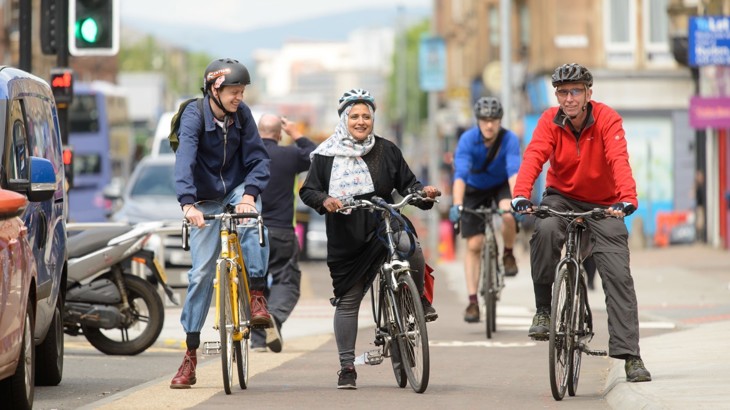What is the best way to make decisions about which transport schemes should be funded? When we know so much about the damage that is done by big schemes to move more cars over longer distances more quickly, how do we keep coming up with these as a preferred solution? The standard approach to deciding which transport solutions are appropriate for overcoming challenges to the movement of goods and people is to stack up the cost of the scheme alongside the value of the benefits that the scheme would bring.

As well as this economic expression of the costs relative to the benefits, a range of other factors are considered in making this judgement.
In England, this system is called WebTAG – the web-based transport appraisal guidance. Webtag lies at the heart of transport investment decision making. WebTAG is a very sophisticated toolkit. All sorts of models and assessment devices are included. Unfortunately, some of these are tools are weak, and serve to distort the decision-making process. Dubious modelling approaches to estimating questionable impacts lead to decisions that have huge impacts on the ways people choose to move. And these choices have knock-on effects on health and wellbeing, air quality, carbon emissions and place.
Sustrans is advocating significant changes to the transport appraisal system
We are proposing that WebTAG is reformulated to encourage a ‘least-damage hierarchical approach’ to scheme assessment. That is to say, for any given transport challenge, we should first consider the extent to which the challenge could be overcome by better supporting walking and cycling – the first tier solution.
The second tier for consideration would be local public transport solutions. The third tier would be regional level public transport solutions. And the fourth tier would incorporate more damaging solutions, such as large-scale road building.
There should be a de facto assumption that appropriate investment in walking and cycling should be implemented and tested for impact, and public transport solutions considered, before more damaging schemes become part of the investment package.
This approach would start to rebalance the decision-making process in favour of less damaging solutions
How would it work in practice? Let’s take an example of a scheme to build a motorway.
Sustrans recently worked on a report that was critical of the decision to ‘improve’ the M4 around Cardiff and Newport in South Wales. How could walking and cycling help with a problem of congestion on a motorway that enables movement between South West Wales and Southern England, and movement in the South East Wales area?
When one studies the origins and destinations of the trips currently made on the existing stretch of motorway, a very large proportion of them are relatively short. These may be between the cities, or the towns and villages in the wider area. Or they may be trips which circumvent a city centre – perhaps taking the long way round from one side of a city to the other. Providing alternatives for people making these trips could remove a substantial amount of the traffic from the motorway. Better options can support better travel choices.
So, we can make a really strong case that improving walking and cycling facilities, and improving public transport, within and between Cardiff and Newport can make a huge difference to the volume of traffic on the existing M4. Reducing the volumes of traffic on the existing M4 means that some of the trips that are more likely to be necessarily road-based (perhaps access to markets for producers in South West Wales) are less prone to disruptive congestion.
However, appraisal mechanisms as applied to this particular challenge have only offered major road investment solutions.
This is why we think that rebalancing the approach to appraisal to encourage a first stage focus on less damaging, more equitable, healthier, cleaner solutions will be much preferable.
[NB – Welsh appraisal uses Weltag, which is similar to Webtag, but different]

